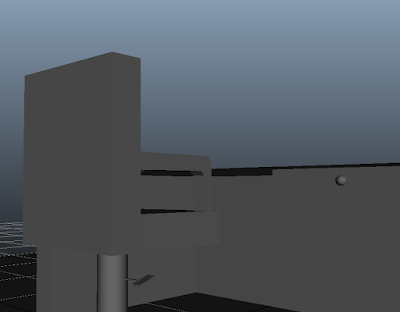 |
| Artwork by FireRai |
When people think
video game side kick, the first thing when tends to pop into people’s minds is Luigi.
However, I think Luigi isn’t that great.
Don’t get me wrong, I have no beef with Luigi, I like him more than Mario (as Mario has zero personality), but I think he is just a gloried re-colouring with Mario not just in terms of visuals but also mechanics and story.
They’re brothers, so they basically look the same and thus practically play the same and really are the same.
But Tails, now Tails is a proper side kick.
Miles “Tails” Prower is the side kick of Sonic, but you already knew that.
So what’s so special about Tails? Well in that era of gaming, side kicks or second-player characters tended to either be a literal or glorified carbon-copy of the protagonist.
However, I think Luigi isn’t that great.
Don’t get me wrong, I have no beef with Luigi, I like him more than Mario (as Mario has zero personality), but I think he is just a gloried re-colouring with Mario not just in terms of visuals but also mechanics and story.
They’re brothers, so they basically look the same and thus practically play the same and really are the same.
But Tails, now Tails is a proper side kick.
Miles “Tails” Prower is the side kick of Sonic, but you already knew that.
So what’s so special about Tails? Well in that era of gaming, side kicks or second-player characters tended to either be a literal or glorified carbon-copy of the protagonist.
On the base functioning
level, Tails is more advanced than Sonic. He can’t run as fast (although he can
get pretty close as he’s always behind), but he can fly.
Tails being able to fly almost alone justifies his existence, being able to sick up and move Sonic around the level, to greater heights or to save him from falling to the bottom of the screen, his flight makes him different and gives the two of them an instant dynamic.
His flight doesn’t just end at his own personal two-tail’d ability, he also has a plane which serves the narrative throughout the entire franchise.
Tails being able to fly almost alone justifies his existence, being able to sick up and move Sonic around the level, to greater heights or to save him from falling to the bottom of the screen, his flight makes him different and gives the two of them an instant dynamic.
His flight doesn’t just end at his own personal two-tail’d ability, he also has a plane which serves the narrative throughout the entire franchise.
Personality wise,
Sonic and Tails also have a dynamic which I don’t think has been topped by any
other video game duo.
 |
| The 2003 Sonic anime got super-dark towards the end. |
While I dig Master Chief and Cortana/Arbiter, it can feel a little bit wooden at times.
But the connection between Sonic and Tails just fits so well.
They’re not blood-brothers (clearly not, they’re two entirely different species), but the relationship between them often is pitched more as one of brotherhood than just simply best friends.
Tails feeds off Sonic's confidence and Sonic feeds off Tails intellect. Tails is taken from his pathetic wimpy form to one with self-confidence thanks to Sonic. Sonic is humbled and is allowed to feel emotions when he is with Tails. While not seen in the game mechanics, story wise Sonic can’t swim (because someone at SEGA Japan thought Hedgehogs couldn't swim and didn't bother to research into it), but Tails can.
Sonic is often shown as either cool, cynical or even at times rather cold when it comes to how he deals with other characters, good or evil, but rarely has he ever seen to get angry or frustrated at Tails, even when Tails screwed up (like in Adventure when he basically gave Eggman a chaos emerald by accident).

There is a deeper sense of care and love between the two, even when Sonic games are at their most awful (and they can be awful *cough* Rise of Lyric *cough*), the writing of those two stays about the same.
The comics of course take a lot deeper, but I am not here to talk about comics as it would take forever (although they’re awesome).
When game characters so often have the chemistry of a dusty wooden spoon, it’s always nice to know, that a fox and a hedgehog will always remain true.
Oh and he's super cute.




















